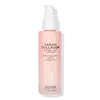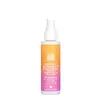What's inside
What's inside
 Key Ingredients
Key Ingredients

 Benefits
Benefits

 Concerns
Concerns

 Ingredients Side-by-side
Ingredients Side-by-side

Butyl Methoxydibenzoylmethane 3%
UV AbsorberHomosalate 15%
Skin ConditioningOctocrylene 10%
UV AbsorberEthylhexyl Salicylate 5%
UV AbsorberWater
Skin ConditioningButyloctyl Salicylate
Skin ConditioningCoconut Alkanes
EmollientCoco-Caprylate/Caprate
EmollientAloe Barbadensis Leaf Juice
Skin ConditioningGlycerin
HumectantHydrolyzed Jojoba Esters
Skin ConditioningGlyceryl Stearate
EmollientGlyceryl Stearate Citrate
EmollientSodium Stearoyl Glutamate
CleansingPolyglyceryl-4 Isostearate
EmulsifyingStearic Acid
CleansingLysolecithin
EmulsifyingSclerotium Gum
Emulsion StabilisingXanthan Gum
EmulsifyingPullulan
Hydrogenated Castor Oil
EmollientSr-Hydrozoan Polypeptide-1
HumectantSodium Hyaluronate
HumectantCitrus Aurantium Dulcis Flower Extract
Skin ConditioningJasminum Officinale Extract
MaskingChamomilla Recutita Flower Extract
MaskingArnica Montana Extract
Skin ConditioningSqualane
EmollientOryza Sativa Starch
AbsorbentBiosaccharide Gum-1
HumectantPhenoxyethanol
PreservativeEthylhexylglycerin
Skin ConditioningParfum
MaskingButyl Methoxydibenzoylmethane 3%, Homosalate 15%, Octocrylene 10%, Ethylhexyl Salicylate 5%, Water, Butyloctyl Salicylate, Coconut Alkanes, Coco-Caprylate/Caprate, Aloe Barbadensis Leaf Juice, Glycerin, Hydrolyzed Jojoba Esters, Glyceryl Stearate, Glyceryl Stearate Citrate, Sodium Stearoyl Glutamate, Polyglyceryl-4 Isostearate, Stearic Acid, Lysolecithin, Sclerotium Gum, Xanthan Gum, Pullulan, Hydrogenated Castor Oil, Sr-Hydrozoan Polypeptide-1, Sodium Hyaluronate, Citrus Aurantium Dulcis Flower Extract, Jasminum Officinale Extract, Chamomilla Recutita Flower Extract, Arnica Montana Extract, Squalane, Oryza Sativa Starch, Biosaccharide Gum-1, Phenoxyethanol, Ethylhexylglycerin, Parfum
Octocrylene 7.6%
UV AbsorberZinc Oxide 6%
Cosmetic ColorantWater
Skin ConditioningCoconut Alkanes
EmollientCalcium Sodium Borosilicate
Butyloctyl Salicylate
Skin ConditioningPropanediol
SolventCetearyl Alcohol
EmollientParfum
MaskingNiacinamide
SmoothingTetrahexyldecyl Ascorbate
AntioxidantJojoba Esters
EmollientLaminaria Digitata Extract
Skin ProtectingAscophyllum Nodosum Extract
Skin ConditioningTocopherol
AntioxidantCaprylhydroxamic Acid
Caprylyl Glycol
EmollientCetyl Alcohol
EmollientCitric Acid
BufferingCoco-Caprylate/Caprate
EmollientCoco-Glucoside
CleansingEthyl Ferulate
AntioxidantGlycerin
HumectantMontmorillonite
AbsorbentSclerotium Gum
Emulsion StabilisingSodium Gluconate
Skin ConditioningSodium Stearoyl Glutamate
CleansingSucrose Distearate
EmollientSucrose Stearate
EmollientXanthan Gum
EmulsifyingOctocrylene 7.6%, Zinc Oxide 6%, Water, Coconut Alkanes, Calcium Sodium Borosilicate, Butyloctyl Salicylate, Propanediol, Cetearyl Alcohol, Parfum, Niacinamide, Tetrahexyldecyl Ascorbate, Jojoba Esters, Laminaria Digitata Extract, Ascophyllum Nodosum Extract, Tocopherol, Caprylhydroxamic Acid, Caprylyl Glycol, Cetyl Alcohol, Citric Acid, Coco-Caprylate/Caprate, Coco-Glucoside, Ethyl Ferulate, Glycerin, Montmorillonite, Sclerotium Gum, Sodium Gluconate, Sodium Stearoyl Glutamate, Sucrose Distearate, Sucrose Stearate, Xanthan Gum
Ingredients Explained
These ingredients are found in both products.
Ingredients higher up in an ingredient list are typically present in a larger amount.
Butyloctyl Salicylate is a chemical UV filter structurally similar to octisalate. It is a photostabilizer, SPF booster, emollient and solvent. This ingredient helps evenly spread out ingredients.
According to a manufacturer, it is suitable for pairing with micro Titanium Dioxide, Zinc Oxide, and pigments.
Photostabilizers help stabilize UV-filters and prevents them from degrading quickly.
Learn more about Butyloctyl SalicylateCoco-Caprylate/Caprate is created from fatty coconut alcohol, caprylic acid, and capric acid.
It is a lightweight emollient. Emollients create a thin barrier on the skin to trap moisture in. This helps keep your skin hydrated and soft.
Once applied, Coco-Caprylate/Caprate is absorbed quickly and leaves a silky feel.
Coco-Caprylate/Caprate may not be fungal acne safe.
Learn more about Coco-Caprylate/CaprateCoconut Alkanes is created from the fatty-acids of coconut oil. It is volatile, meaning it evaporates from the skin.
This ingredient is an emollient and solvent. As an emollient, it helps keep skin soft and hydrated. Solvents help distribute and mix other ingredients. This ensures a more even consistency.
Coconut Alkanes may not be fungal-acne safe.
Learn more about Coconut AlkanesGlycerin is already naturally found in your skin. It helps moisturize and protect your skin.
A study from 2016 found glycerin to be more effective as a humectant than AHAs and hyaluronic acid.
As a humectant, it helps the skin stay hydrated by pulling moisture to your skin. The low molecular weight of glycerin allows it to pull moisture into the deeper layers of your skin.
Hydrated skin improves your skin barrier; Your skin barrier helps protect against irritants and bacteria.
Glycerin has also been found to have antimicrobial and antiviral properties. Due to these properties, glycerin is often used in wound and burn treatments.
In cosmetics, glycerin is usually derived from plants such as soybean or palm. However, it can also be sourced from animals, such as tallow or animal fat.
This ingredient is organic, colorless, odorless, and non-toxic.
Glycerin is the name for this ingredient in American English. British English uses Glycerol/Glycerine.
Learn more about GlycerinOctocrylene protects skin from sun damage. It absorbs UV-B with peak absorption of 304 nm. It is a common sunscreen ingredient and often paired with avobenzone, a UVA filter. This is because octocrylene stabilizes other sunscreen ingredients by protecting them from degradation when exposed to sunlight. Octocrylene is a photostable ingredient and loses about 10% of SPF in 95 minutes.
Octocrylene also acts as an emollient, meaning it helps skin retain moisture and softens skin. It is oil-soluble and hydrophobic, enhancing water-resistant properties in a product.
Those who are using ketoprofen, a topical anti-inflammatory drug, may experience an allergic reaction when using octocrylene. It is best to speak with a healthcare professional about using sunscreens with octocrylene.
The EU allows a maximum of these concentrations:
Learn more about OctocryleneParfum is a catch-all term for an ingredient or more that is used to give a scent to products.
Also called "fragrance", this ingredient can be a blend of hundreds of chemicals or plant oils. This means every product with "fragrance" or "parfum" in the ingredients list is a different mixture.
For instance, Habanolide is a proprietary trade name for a specific aroma chemical. When used as a fragrance ingredient in cosmetics, most aroma chemicals fall under the broad labeling category of “FRAGRANCE” or “PARFUM” according to EU and US regulations.
The term 'parfum' or 'fragrance' is not regulated in many countries. In many cases, it is up to the brand to define this term.
For instance, many brands choose to label themselves as "fragrance-free" because they are not using synthetic fragrances. However, their products may still contain ingredients such as essential oils that are considered a fragrance by INCI standards.
One example is Calendula flower extract. Calendula is an essential oil that still imparts a scent or 'fragrance'.
Depending on the blend, the ingredients in the mixture can cause allergies and sensitivities on the skin. Some ingredients that are known EU allergens include linalool and citronellol.
Parfum can also be used to mask or cover an unpleasant scent.
The bottom line is: not all fragrances/parfum/ingredients are created equally. If you are worried about fragrances, we recommend taking a closer look at an ingredient. And of course, we always recommend speaking with a professional.
Learn more about ParfumSclerotium Gum is a polysaccharide gum made by the fungus, Sclerotium rolfssii. It is similar to xanthan gum.
In cosmetics, Sclerotium Gum is used to thicken the texture and to help stabilize other ingredients.
As an emulsifier, Sclerotium Gum helps prevent ingredients from separating, such as water and oil.
Learn more about Sclerotium GumSodium Stearoyl Glutamate is an emulsifier and helps condition the skin. It is amino acid-based.
In higher amounts, it may act as a cleansing agent.
Water. It's the most common cosmetic ingredient of all. You'll usually see it at the top of ingredient lists, meaning that it makes up the largest part of the product.
So why is it so popular? Water most often acts as a solvent - this means that it helps dissolve other ingredients into the formulation.
You'll also recognize water as that liquid we all need to stay alive. If you see this, drink a glass of water. Stay hydrated!
Learn more about WaterXanthan gum is used as a stabilizer and thickener within cosmetic products. It helps give products a sticky, thick feeling - preventing them from being too runny.
On the technical side of things, xanthan gum is a polysaccharide - a combination consisting of multiple sugar molecules bonded together.
Xanthan gum is a pretty common and great ingredient. It is a natural, non-toxic, non-irritating ingredient that is also commonly used in food products.
Learn more about Xanthan Gum